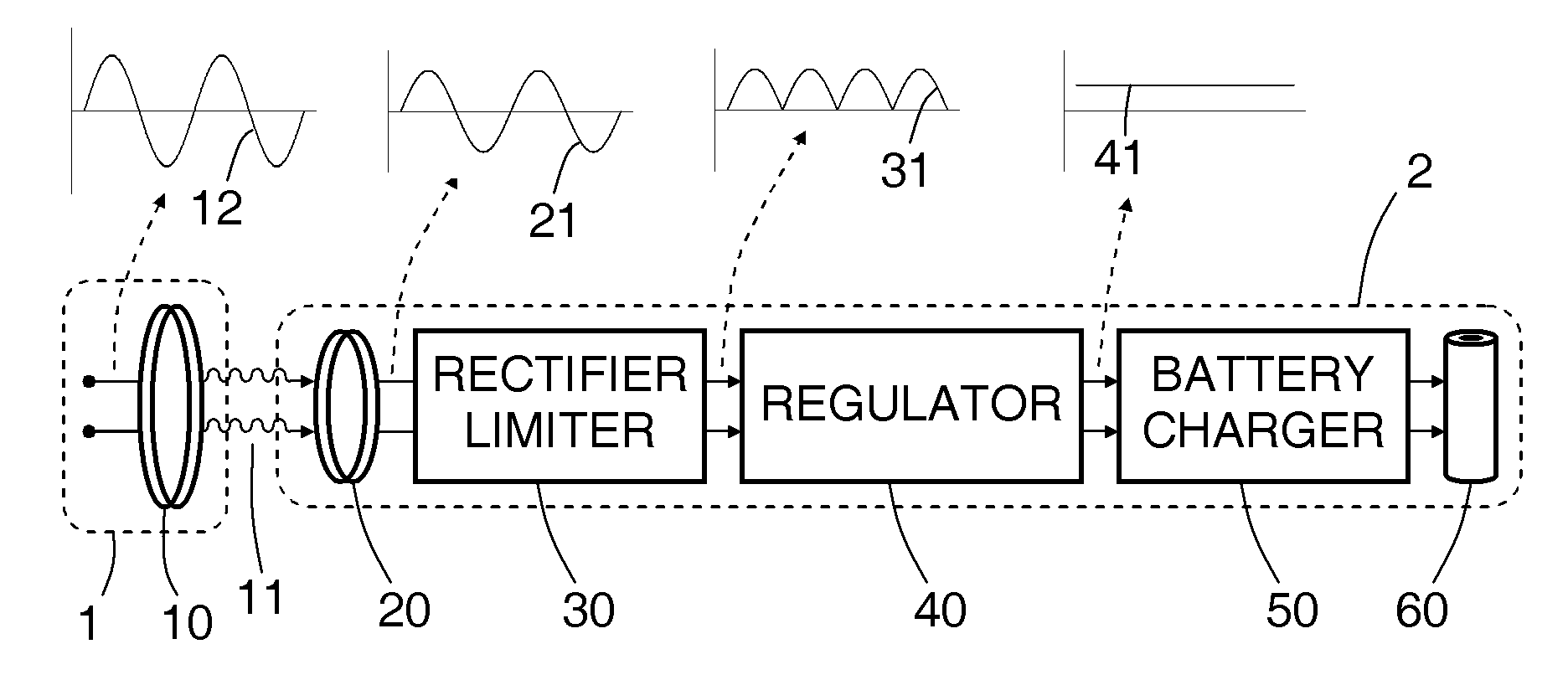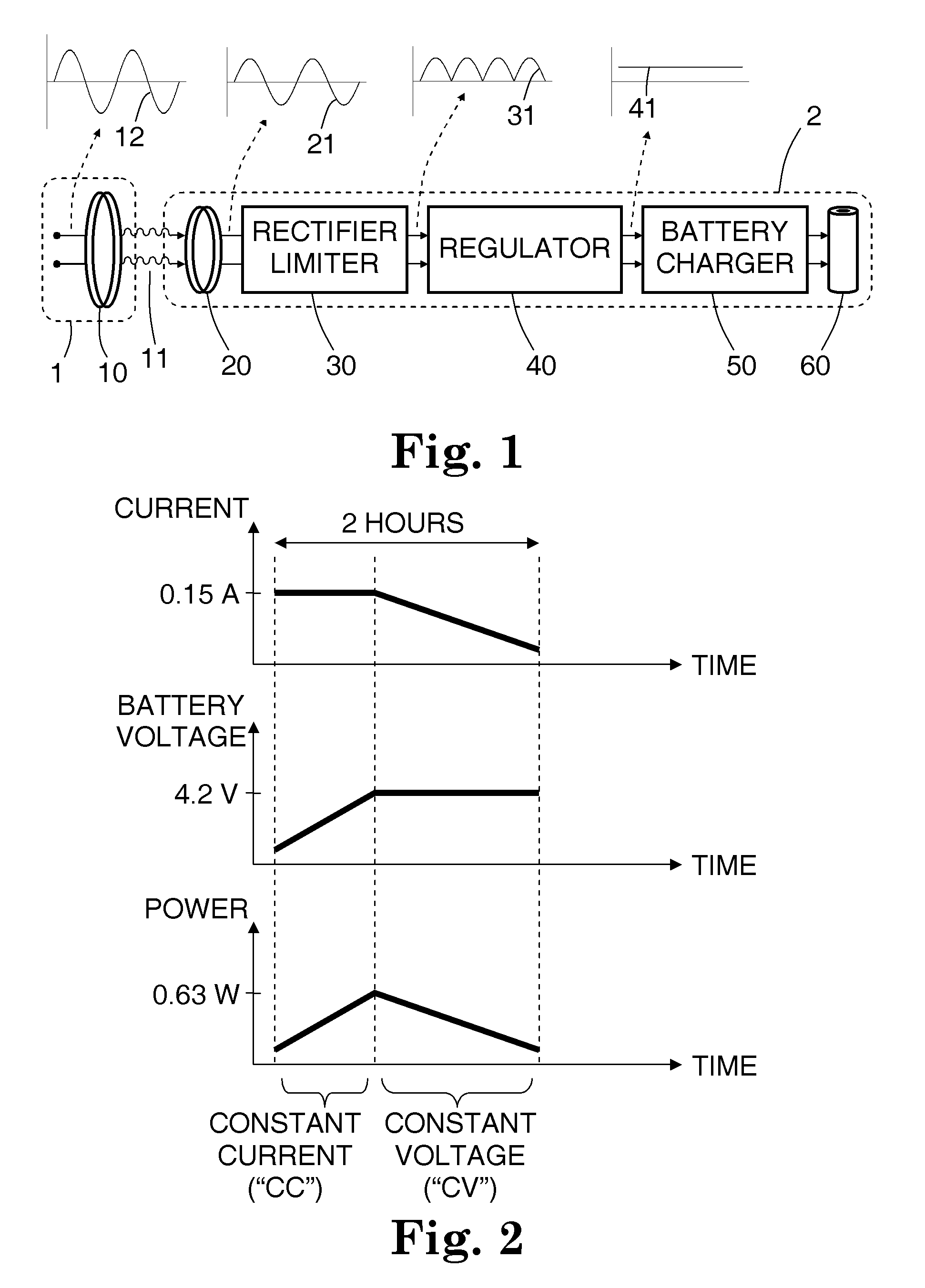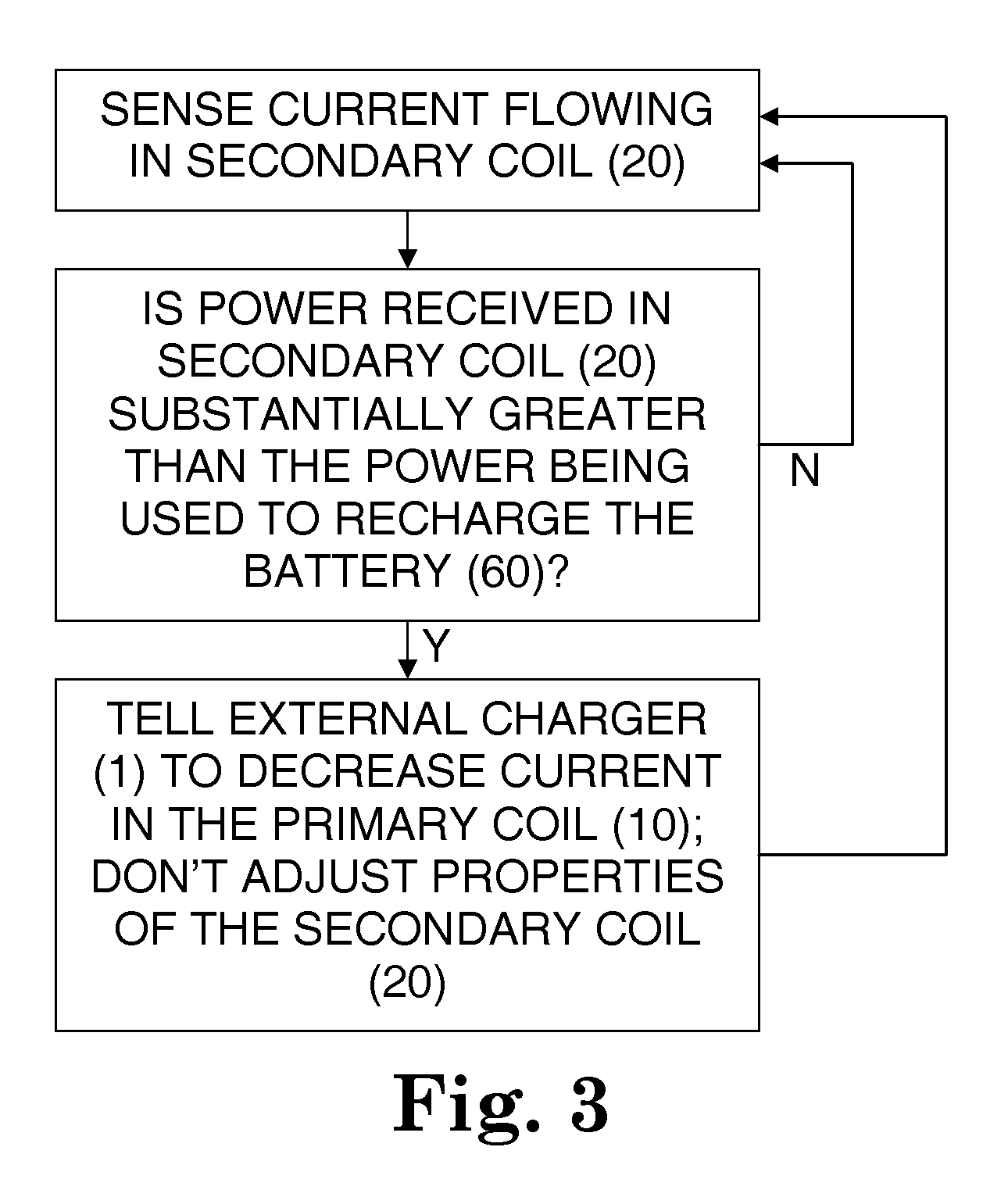Self-regulating transcutaneous energy transfer
a transcutaneous energy and self-regulation technology, applied in the field of implantable medical devices, can solve the problems of overheating of implants, damage to patient tissue, and unacceptable increase of charging tim
- Summary
- Abstract
- Description
- Claims
- Application Information
AI Technical Summary
Benefits of technology
Problems solved by technology
Method used
Image
Examples
Embodiment Construction
[0038]A rechargeable battery system and method are disclosed, in which an implantable medical device (IMD) regulates its transfer of energy from a separate charger unit. For recharging, a charger unit is brought into proximity to the implanted device. An oscillating current is generated in a primary coil, located in the charger. By inductive coupling through an oscillating magnetic field, an alternating current is generated in a secondary coil, which is implanted in or near the implanted device. The alternating current then passes through a half-wave or full-wave rectifier to form a one-sided current, then passes through a regulator to form an essentially direct current, which is in turn directed to the rechargeable battery in the implanted device.
[0039]The secondary coil has a controllable damped resonant frequency, which can be dynamically tuned away from the driving frequency of the primary coil by a variable resistor and / or by varying a duty cycle of a rapidly switched electrica...
PUM
 Login to View More
Login to View More Abstract
Description
Claims
Application Information
 Login to View More
Login to View More - R&D
- Intellectual Property
- Life Sciences
- Materials
- Tech Scout
- Unparalleled Data Quality
- Higher Quality Content
- 60% Fewer Hallucinations
Browse by: Latest US Patents, China's latest patents, Technical Efficacy Thesaurus, Application Domain, Technology Topic, Popular Technical Reports.
© 2025 PatSnap. All rights reserved.Legal|Privacy policy|Modern Slavery Act Transparency Statement|Sitemap|About US| Contact US: help@patsnap.com



